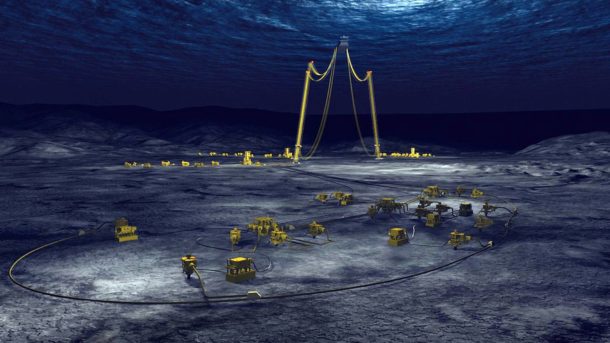Sea Floor Processing

SEA FLOOR PROCESSING As fossil fuel exploration and production moves into ever deeper waters, developing technologies are moving much of the processing down to the sea floor. Hydrocarbon deposits are not simple pools of oil or pockets of gas; rather they are typically an untidy mix of oil, gas, brine, and solids. Seafloor fossil fuel processing separates the useful product extracted from the waste products immediately instead of transporting it all to land.
Deposits are also often under enormous pressures. The wellhead pressure of the BP-Horizon disaster was in excess of 13,000 psi (and why stopping the flow was difficult). Handling multi-phase materials (solids, liquids, and gasses) at enormous pressures is not a formula for “quiet.”
Equipment placed on the seafloor to handle the tasks of separation, reinjection, and flow control all produce some attendant noises. While none of these processes have yet been characterized or measured, seafloor equipment is being deployed that are akin to setting up small cities on the seabed. If these were in an airborne environment the noises would be attenuated within a reasonable distance. That they are in the sea means that whatever noises they generate will be heard at far greater distances.
Audiographs
Seafloor Processing
Links







